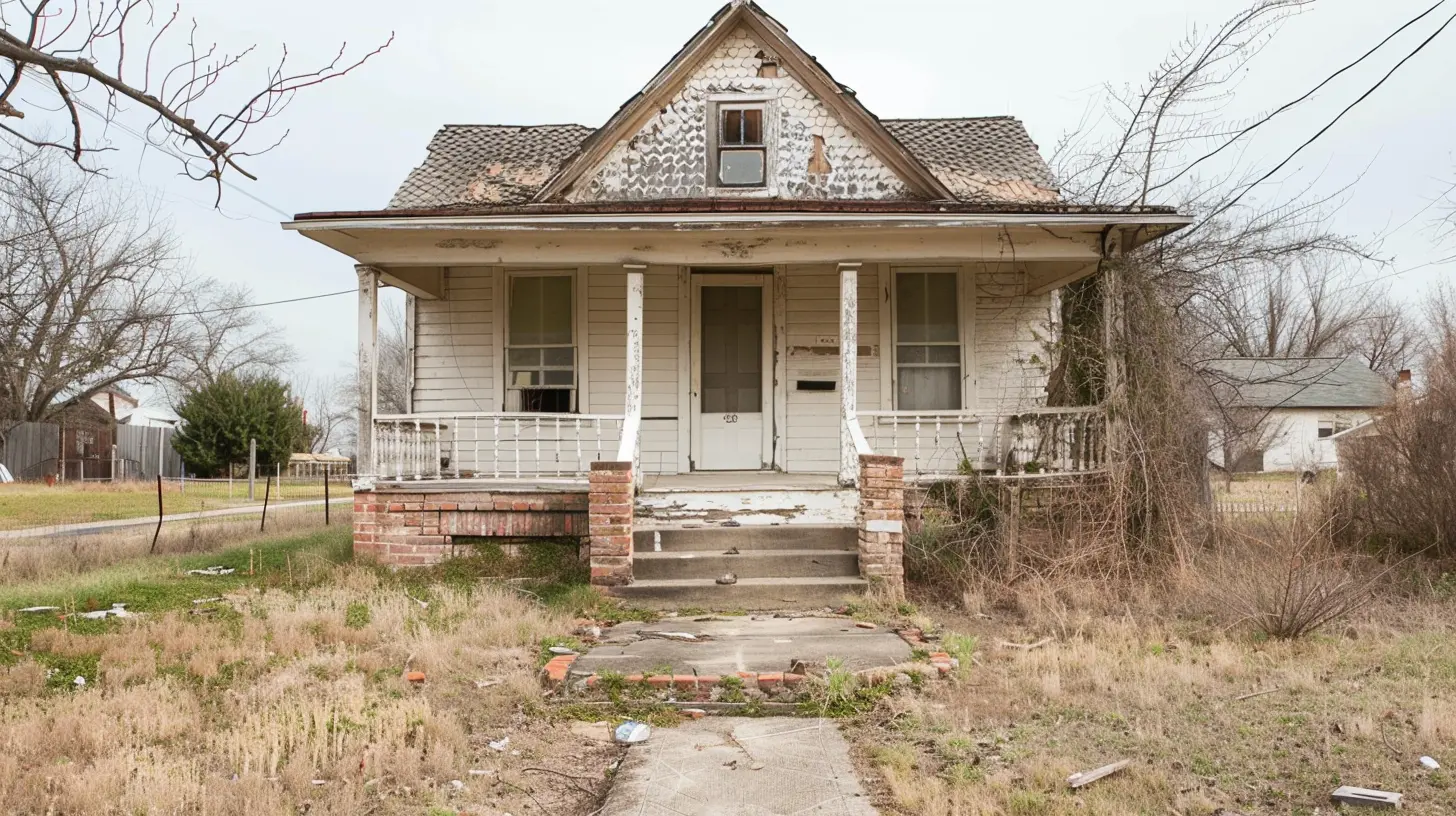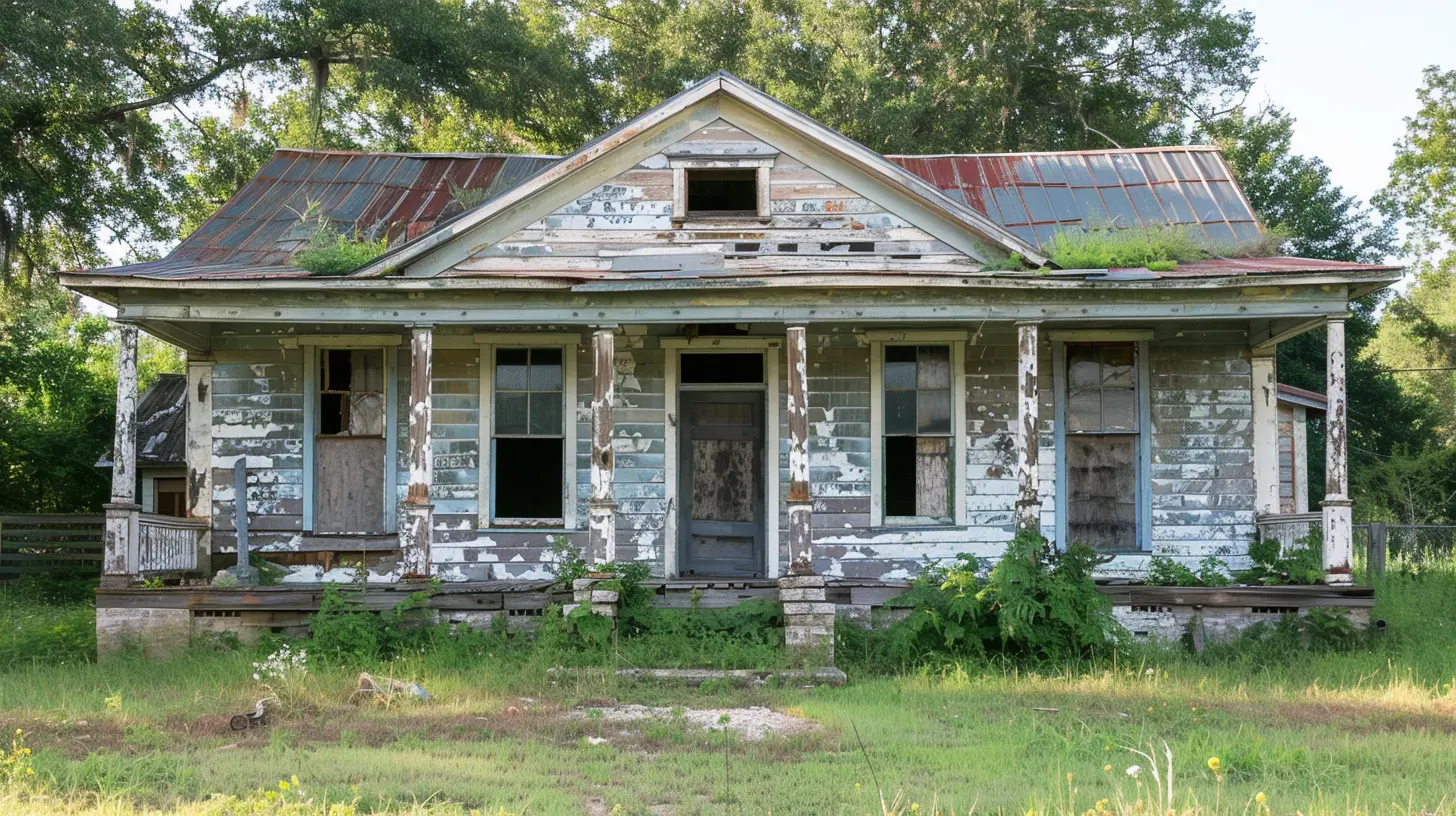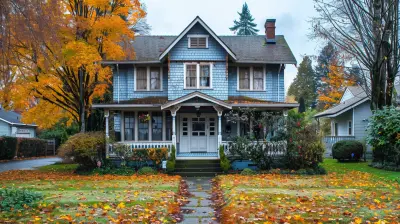18 April 2025
Fixer-upper projects can be incredibly exciting. You buy an old, worn-out property with visions of transforming it into the perfect dream home or a profitable investment. It’s like taking a blank canvas and painting your masterpiece, right? But here’s the catch: if you’re not careful, that dream project can quickly turn into a money pit. Overcapitalization is one of the biggest traps renovators fall into, and it can leave you stuck with a property that’s worth far less than what you’ve poured into it. So, how do you avoid overcapitalization and ensure your fixer-upper stays on the right track? Let’s dive in.
What Is Overcapitalization?
Before we get into the "how-to," let’s take a moment to define overcapitalization. In simple terms, overcapitalization happens when you spend more on a property than it’s worth in the current market. Think of it like putting the engine of a Ferrari into a rusty old sedan—it’s overkill and doesn’t make financial sense.It’s easy to get carried away with renovations, especially when you’re emotionally attached to a project. But neglecting to consider the property's market limits can leave you with an over-improved home that no buyer or appraiser sees as being worth the money you spent. And that’s a tough pill to swallow.
Why Does Overcapitalization Happen?
Overcapitalization doesn’t just happen by accident. It’s usually the result of poor planning, emotional decisions, or a lack of understanding about the real estate market. Here are a few common reasons it occurs:1. Overestimating Value: Many people assume that every dollar spent on renovations will result in increased property value—but that’s simply not true. Some upgrades do little to nothing for resale value.
2. Ignoring Neighborhood Limits: Every area has a ceiling price—the highest amount buyers are willing to pay for a property in that location. Upgrading beyond that limit is essentially throwing money away.
3. Going Overboard: Let’s face it, it’s easy to take inspiration from HGTV and go wild with the latest trends. But adding luxury features that aren't appropriate for the home or area is a quick way to overcapitalize.
4. Failing to Budget Properly: Renovations often cost more than expected. Without a clear and realistic budget, expenses can spiral out of control, leading you into financial quicksand.
How to Avoid Overcapitalization in Fixer Upper Projects
Avoiding overcapitalization requires a mix of foresight, discipline, and market knowledge. Below are actionable steps you can follow to keep your fixer-upper project on the right track.1. Understand Market Conditions and Trends
Before you even pick up a hammer, spend time researching the local market. What are similar homes in the area selling for? What features are buyers looking for? Scope out recent sales data and talk to local real estate agents to get a feel for what’s hot—and what’s not.By having a clear understanding of what buyers value in your property's area, you can make informed decisions about which renovations are worth it and which ones to skip.
Pro Tip: Don’t just look at today’s market—consider where the market might be in a few years. For example, if the neighborhood is poised for growth, modest upgrades now could pay off big time down the road.
2. Set a Realistic Budget (And Stick To It)
Budgeting is your best friend when it comes to avoiding overcapitalization. Start by setting a clear, detailed budget for your renovation project. Break it down room by room, including materials, labor, and a contingency fund for unexpected costs (because, let’s face it, there will always be surprises).Once you’ve set your budget, don’t veer off course. It’s like having a roadmap—straying too far will leave you lost and out of cash.
Pro Tip: Use the “70% Rule” as a guideline. This rule suggests you should only spend 70% of the property's after-renovation value (ARV) on the purchase price and renovation combined. This ensures you leave room for profit while avoiding overcapitalization.
3. Focus on High-Value Improvements
Not all renovations are created equal. Some upgrades add significant value to a property, while others are just money down the drain. Focus on the improvements that matter most to buyers.Here are a few high-value upgrades:
- Kitchen Remodels: A stylish, functional kitchen can be a game-changer. Just keep it modest—no need for a million-dollar chef’s kitchen in a starter home.
- Bathroom Updates: Bathrooms are another big selling point for buyers. Modern, clean designs with neutral tones tend to win every time.
- Curb Appeal: First impressions count. Basic landscaping, a fresh coat of paint, and a welcoming entrance can make a huge difference.
- Energy Efficiency: Features like insulation, energy-efficient windows, and solar panels are increasingly popular with environmentally-conscious buyers.
On the flip side, be cautious about adding high-end features like intricate crown molding, imported marble, or a custom wine cellar unless the market (and property) demands it.
4. Work With Professionals
DIY renovations can save you money upfront, but they’re not always the best choice. Poorly executed work will cost you more in the long run—and could even decrease your property’s value. Leave the complicated tasks (like plumbing, electrical work, or structural changes) to the pros.Hiring professionals can also keep you grounded in reality. Architects, contractors, and real estate agents often have a clear understanding of what works and what doesn’t for the current market. Tap into their knowledge and expertise.
5. Avoid Over-Personalization
We all want to love the homes we create, but if your fixer-upper is an investment property, you need to think like a buyer. Super unique or overly specific design choices can alienate potential buyers. While you may love that purple backsplash or themed bathroom, others may not.Stick to neutral, timeless materials and finishes that appeal to a broad audience. Remember, you’re renovating for the market, not just yourself.
6. Know When to Walk Away
Not every fixer-upper is worth the effort. Sometimes, the numbers just don’t add up, and that’s okay. If the property is in a bad location, the repairs are too extensive, or the potential resale value isn't high enough, don’t be afraid to walk away.It’s better to pass on a risky project than to overcapitalize and regret it later. Think of it like fishing—you don’t have to reel in every catch. Be patient, and the right property will come along.
7. Track Every Penny
Renovations can feel like a financial black hole if you’re not diligent. Track every expense, no matter how small. This can help you identify areas where you’re overspending and adjust accordingly before it’s too late.There are budget-tracking apps specifically designed for renovations, or you can go old-school with a spreadsheet. Whichever method you choose, the key is consistency.
8. Get a Pre-Renovation Appraisal
When in doubt, call in the experts. A pre-renovation appraisal can give you a better idea of the property’s current value and what it could sell for post-renovation. This helps you set realistic spending limits and avoid overcapitalization.Pro Tip: Some appraisers also offer advice on which improvements will yield the best return in your market.
9. Stick to the Spirit of the Property
Lastly, let the property guide you. If you’ve purchased a charming 1950s bungalow, don’t try to turn it into a futuristic modern masterpiece—it’ll feel disjointed and turn buyers off. Stay true to the home’s original character while giving it a fresh, updated feel.
The Bottom Line
Fixer-upper projects are like walking a financial tightrope. It takes careful planning, research, and discipline to avoid overcapitalization and turn a profit. By understanding your market, sticking to a budget, and focusing on high-value improvements, you can transform your property into a gem that stands out (in a good way) without sinking too much cash into it.So, are you ready to tackle your fixer-upper without falling into the money pit? With these tips in hand, you can feel confident taking on your next project—without the headache of overcapitalization. Now go forth and renovate smartly!





Daphne Burton
Embracing fixer-upper projects is a journey filled with potential! By focusing on smart budgeting and strategic improvements, you can create a dream home without overspending. Remember, thoughtful planning and creativity are your best allies. Celebrate each step, and watch your vision come to life while staying within your means!
April 21, 2025 at 12:07 PM